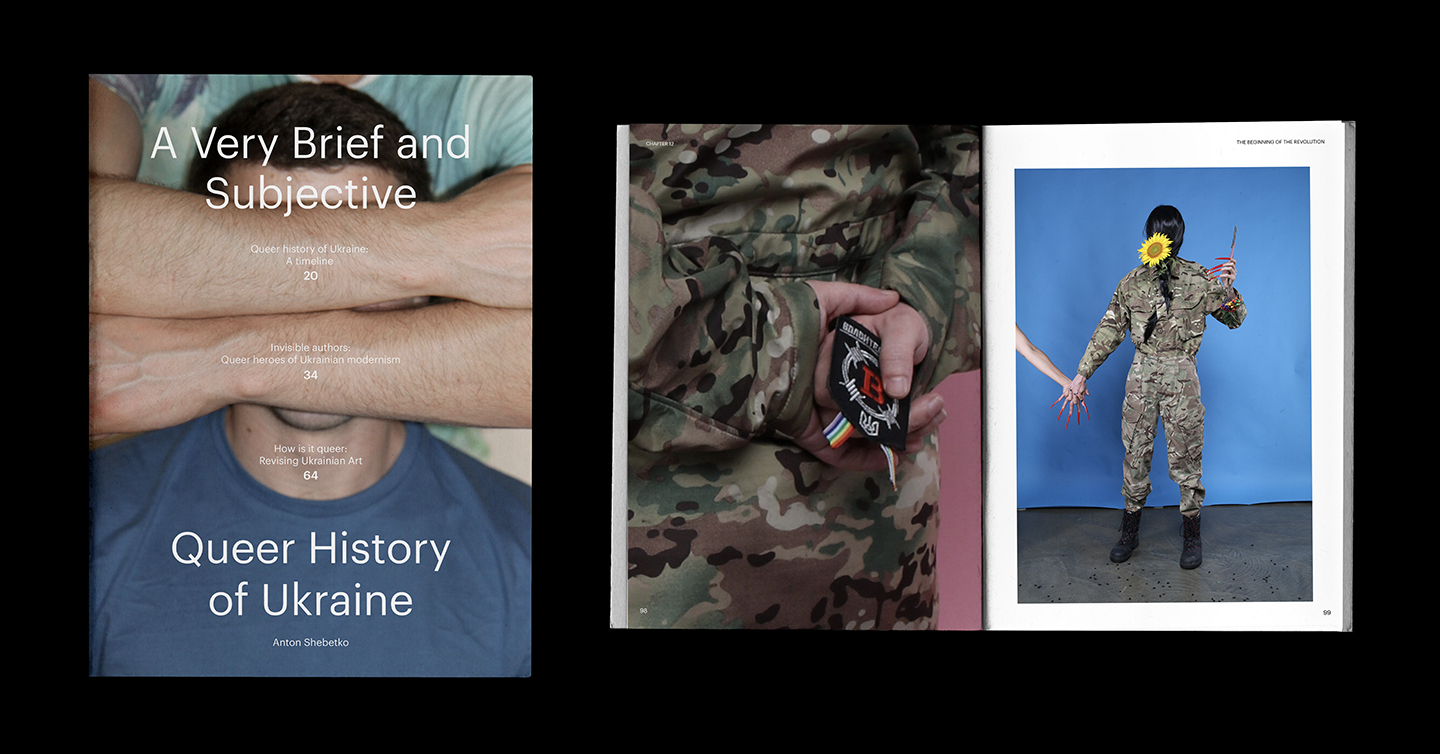Ukrainian photographer Anton Shebetko created «А Very Brief and Subjective Queer History of Ukraine», an artbook that continues his many years of research on the Ukrainian queer community. He calls the work «personal and autobiographical», and hopes it will become part of a larger, more thorough study of the history of the LGBTQ community in Ukraine.
DTF Magazine spoke to the photographer about the artbook, and Shebetko’s work can be seen at the Foam Museum Amsterdam at his solo exhibition, «To Know Us Better», starting July 29
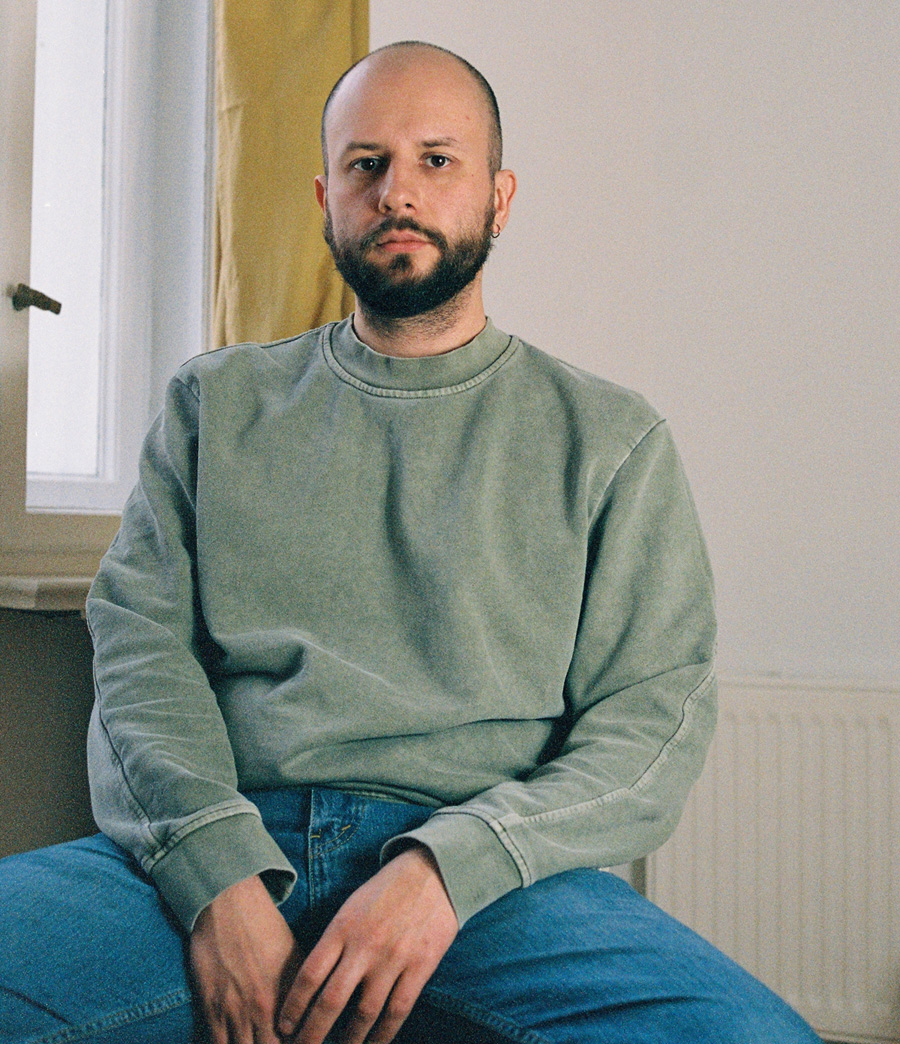
ABOUT ANTON
LGBTQ+ themes are one of the key themes in Shebetko’s work. Anton moved from photographs of friends and acquaintances in which he raised issues of corporeality, sexuality, and eroticism to an exploration of the problem of representation of the queer community in Ukraine.
One of such most media projects is «We Were Here» (2018). Its heroes are Ukrainian LGBTQ+ soldiers who participated in the Anti-Terrorist Operation and later in the JFC. As Anton explained, «this work tells the story of those who, on the one hand, became a real Ukrainian hero of our time, and on the other hand, remains without the attention of most fellow citizens».
Shebetko’s other project is a large-scale collage installation Common People (2020), in which dozens of impersonal portraits of Ukrainian gay men hide their orientation from family, friends, and colleagues. Anton had damaged some of the photos on purpose to preserve their anonymity, and in other photos the characters hid their faces when they posed.
He also explores places that were once important to homosexuals. For example, he explores a gay resort in the Crimean town of Simeiz or the meeting places in the major cities of the Soviet Union known as «pleshka».
Shebetko’s works have been exhibited in Ukraine, Poland, Germany, Netherlands, Canada, USA and other countries. His texts and projects have been published by Vice, Huck Magazine, GUP Magazine, BBC, Bird in Flight, KyivPost, Deutsche Welle Ukraine and others.
«А VERY BRIEF AND SUBJECTIVE QUEER HISTORY OF UKRAINE»
In June 2022, Shebetko completed his bachelor’s degree in photography at the Gerrit Rietveld Academie in Amsterdam. «А Very Brief and Subjective Queer History of Ukraine» was his graduation project and at the same time a systematization of his previous photographic projects.
The artbook contains a timeline of the history of the LGBTQ community in Ukraine with dates and events that Shebetko considers defining or important for the country, as well as photographs, interviews, and essays. All the texts and photos were created personally by Anton. The artbook was designed by his friend, Dutch designer Pieter Jan Boterhoek.
In working on artbook, Shebetko was guided by «Rajduzhna knyga» (published in 2018 by the LGBTQ rights center «Nash svit»), which contains an introduction and interviews with representatives of the Ukrainian LGBTQ community .
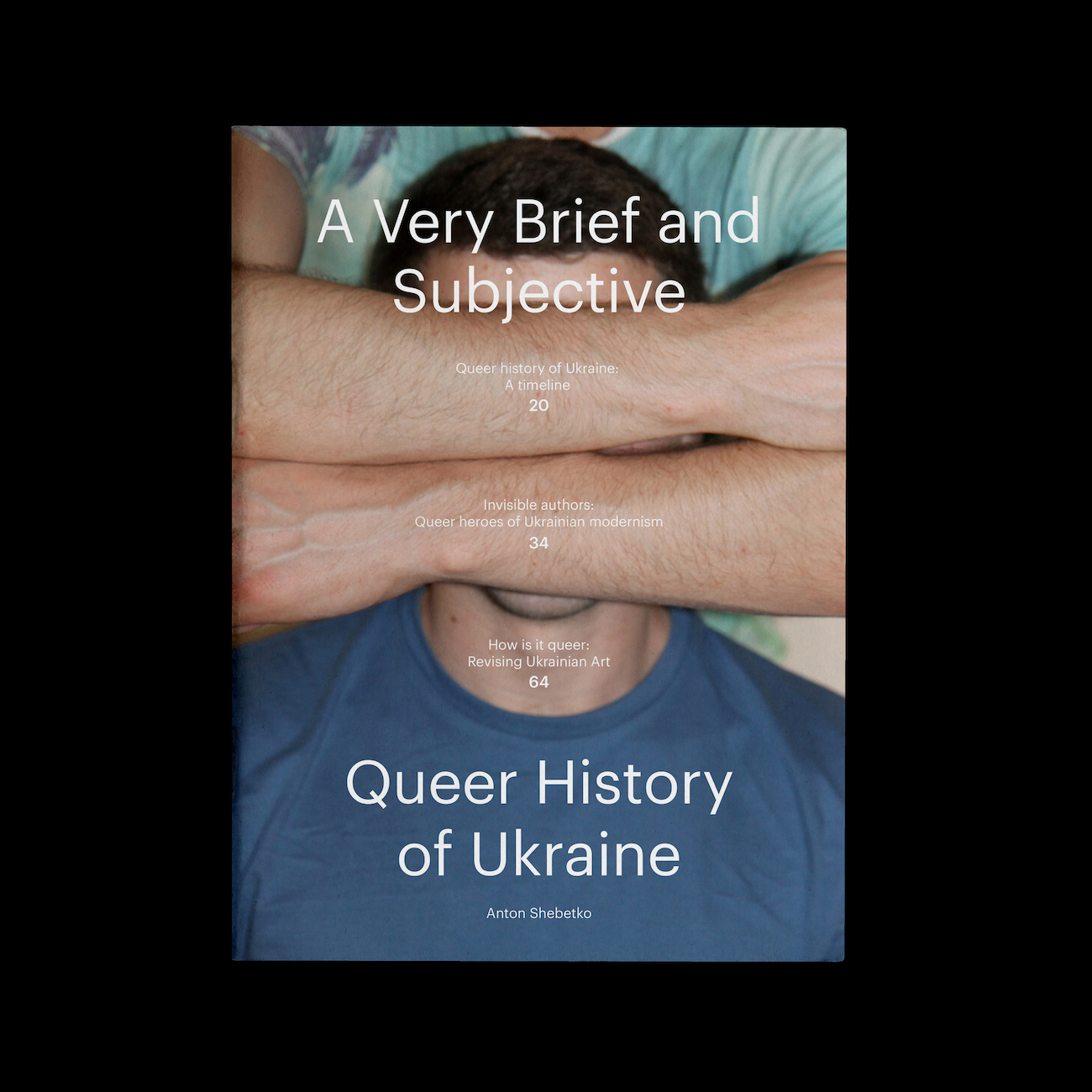
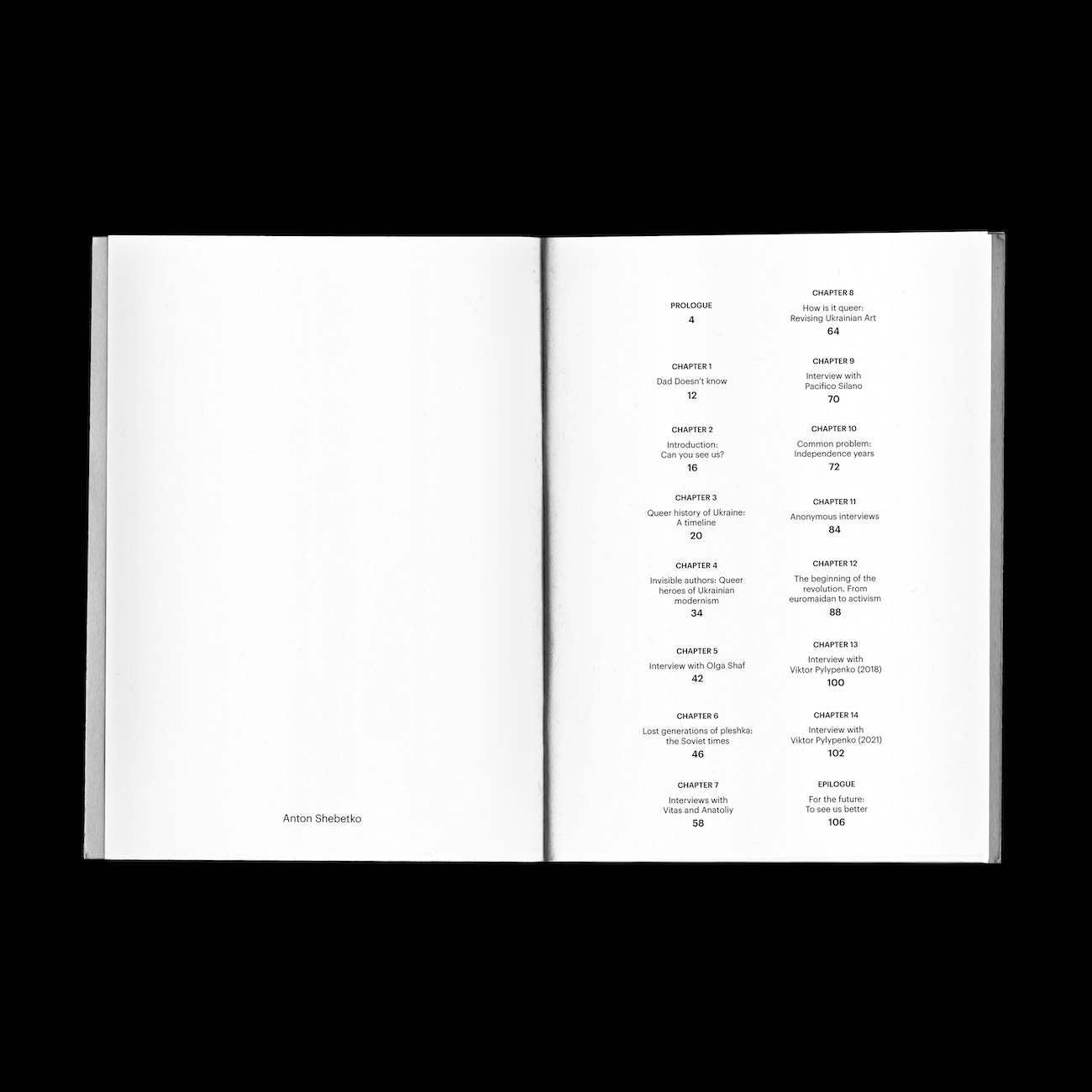
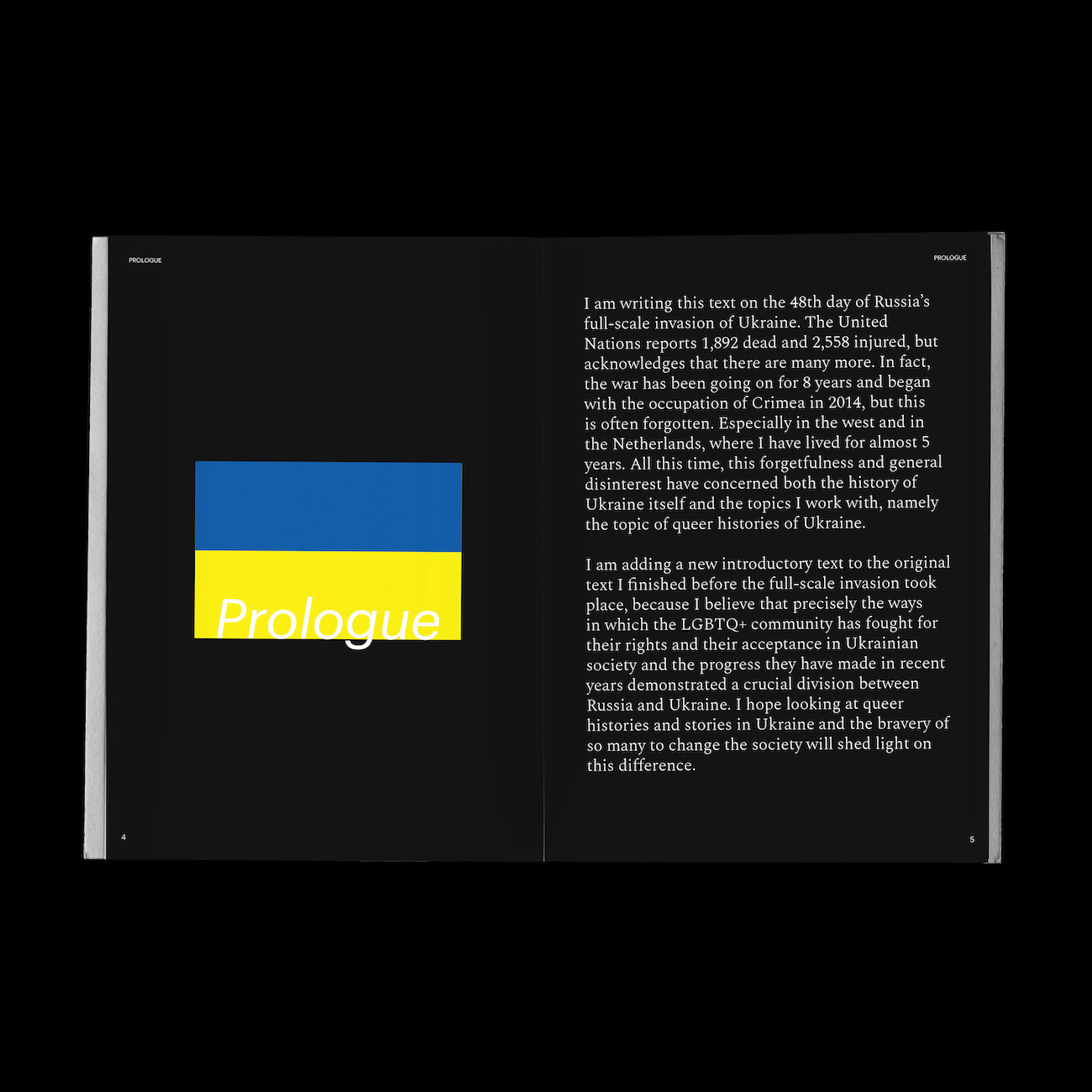
Timeline
The timeline in Anton’s book begins in the middle of the 11th century, in the ancient russian chronicle «The Reading Concerning the Life and Murder of SS Borys and Glib», which retells the story of the deaths of the younger sons of Kyiv’s Grand Duke Volodymyr Sviatoslavych, who became the first russian saints, and hints that Borys may have been gay.
«The chronicler tells us that Duke Borys had a lad, a Hungarian named Heorhiy, whom the duke loved „beyond measure“ and gave him a golden hryvnia (ornament). Having seen Borys wounded by his killers, this lad fell on his body with the words: „I will not leave you, my dear master, but the beauty of your body will fade; here I will also end my life!“ The assassins finished off the wounded duke along with Heorhiy, who had his head cut off to remove the precious jewel», «Rajduzhna knyga» quotes this excerpt.

Shebetko notes that this can only be talked about as a rumor.
«It can’t be accurately researched if only because there were no current concepts of homosexuality and queer culture back then. And all assumptions are made through our current optics. By the way, I was recently told about the widespread theory in Sweden that Charles XII had an affair with Ivan Mazepa, and that’s why they fought on the same side. But we can only study this story at the level of rumor and speculation».
Anton created the timeline based on the work of American-Colombian artist Carlos Motta called «Brief History of Homosexual Repression in Ukraine». It covers the period from the second half of the 16th century, and refers to documentation of the first punishment for homosexuality at Zaporozhian Sich, until May 2014, when the Verkhovna Rada of Ukraine passed changes to the anti-discrimination law by 233 votes, not including the terms «sexual orientation» and «gender identity». Motta received the 2014 Future Generation Art Prize from the PinchukArtCentre for this project.
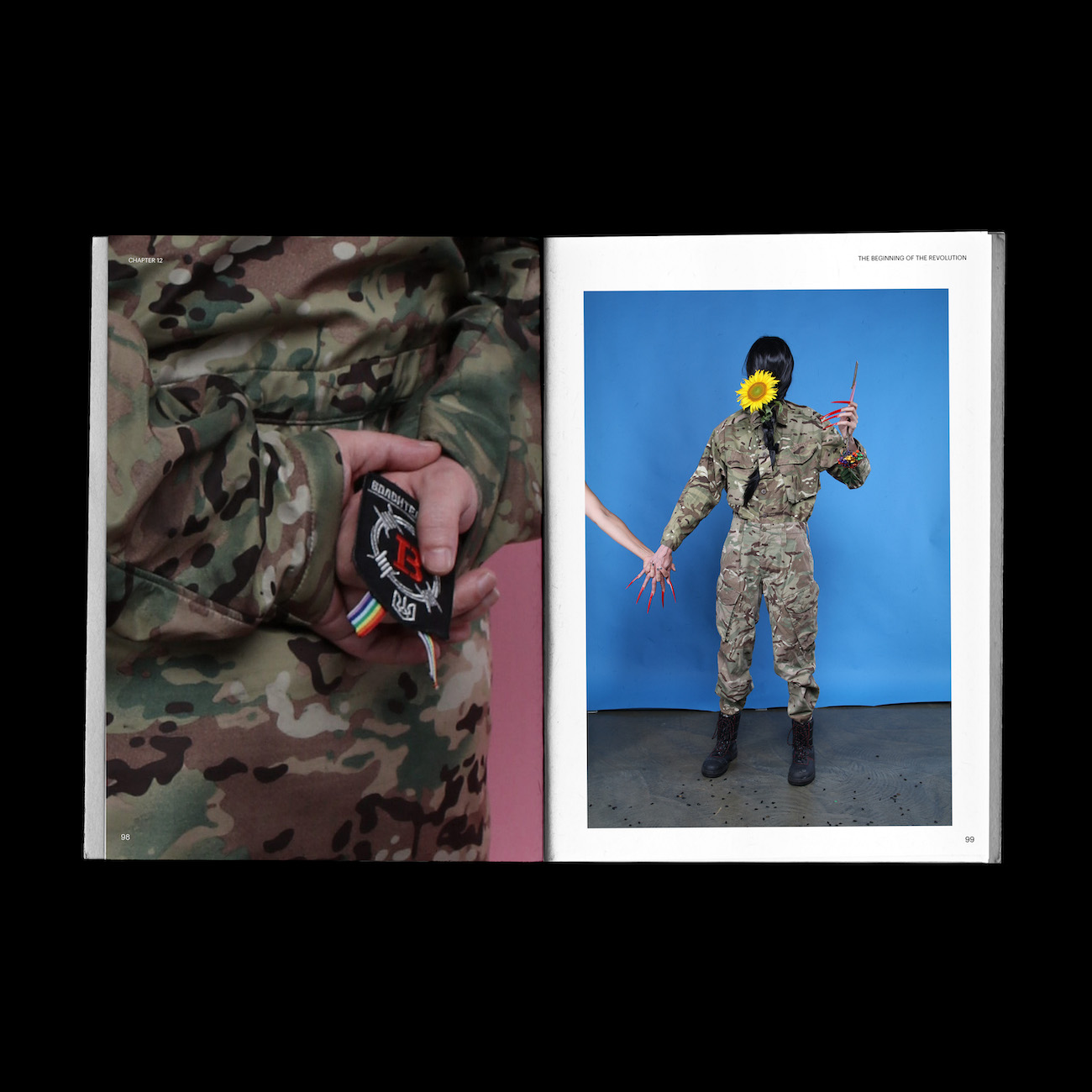
Interviews and stories
«A Very Brief and Subjective Queer History of Ukraine» includes two interviews with military man Viktor Pylypenko — the first interview Shebetko did at the beginning of his research on the LGBTQ+ military, when Pylypenko had not yet come out, and the second took place in late 2021, before the big war began.
Anton also spoke with scholar Olga Shaf, who explores Ukrainian literature through the lens of gender and queer studios, and with American artist Pacifico Silano, who is rethinking queer heritage-the photographer talked to him about Ukrainian queer art and its absence until the mid-2000s.

In addition, «A Very Brief and Subjective Queer History of Ukraine» included interviews with two gay men who were born in the Soviet Union and lived there for some part of their lives.
«These men are of the same birth year, but have as different views of life as possible. One saw an enormous amount of freedom for himself in the USSR with regard to seeking contacts. And the second did not do anything special, but became one of the first activists in Ukraine. The first also expresses quite contrary views, for example, doubts the expediency of the existence of pride. These are two rather opposing views, and I think they should both be heard», Shebetko notes.
According to Shebetko’s observations, the Ukrainian LGBTQ community was more closed and undisclosed before the events of the 2013—2014 Revolution of Dignity. To explore this, he spoke with about 40 members of the community and compiled these conversations into one text with quotes specifically for the artbook.
At the end of the book, Shebetko posted an interview with Anzhelika, an activist, artist and non-binary person he met in Berlin after Feb. 24. This conversation was the beginning of a new project, «To Know Us Better», which will be about members of the Ukrainian LGBTQ community. Here Anton will create a more comprehensive picture than «A Very Brief and Subjective Queer History of Ukraine», and will talk to more members of the Ukrainian queer community to expand the research.

Audience
Although the artbook tells the stories of Ukraine’s queer community, Shebetko notes that he made it primarily for foreigners, who, in his opinion, lack information about how the LGBTQ community in Ukraine lives.
According to his observations, people abroad in terms of queer history and human rights still look at Ukraine through the prism of russia and are surprised that there have been equality marches.
«But we have not only pride, but also Kyrylivska, the film „My Young Prince“, a certain amount of safe spaces, support from cultural figures, the media and sometimes even politicians, which is impossible in a russia that is legally homophobic. Yes, we also have questions about the protection of LGBTQ+ rights. But we are moving in the right direction», the photographer reflects.
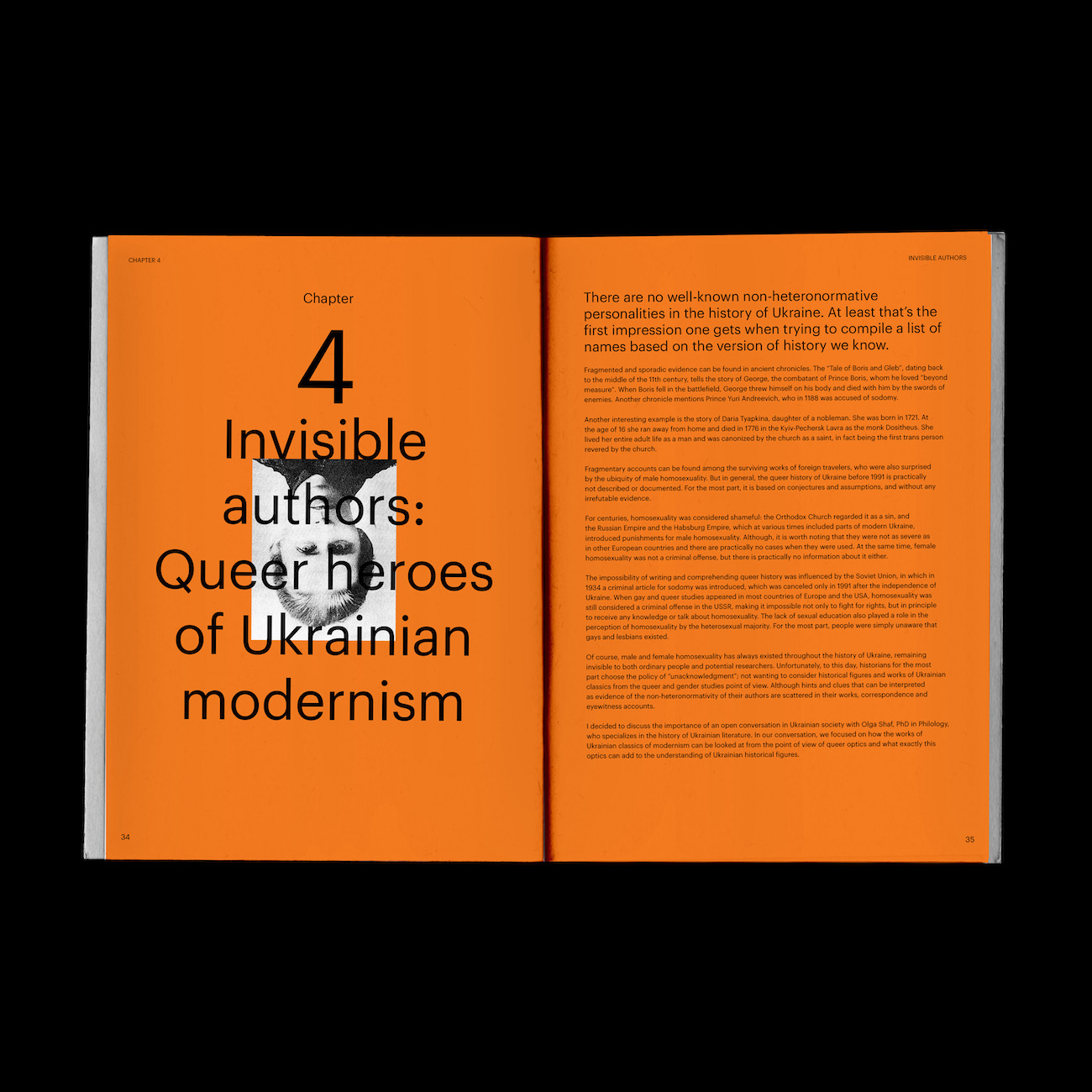
Focus
«A Very Brief and Subjective Queer History of Ukraine» focuses primarily on homosexuality, as it is «a very subjective and autobiographical work», which is already emphasized in the title of the project.
Anton says that if in the future he has the opportunity to issue an additional edition of the artbook, he will definitely complete it — for example, it would include all nine interviews that he was able to record with Ukrainian queer soldiers. It would also include his research on the village of Simeiz, which before the annexation of Crimea by russia was considered an underground/gay resort of sorts.
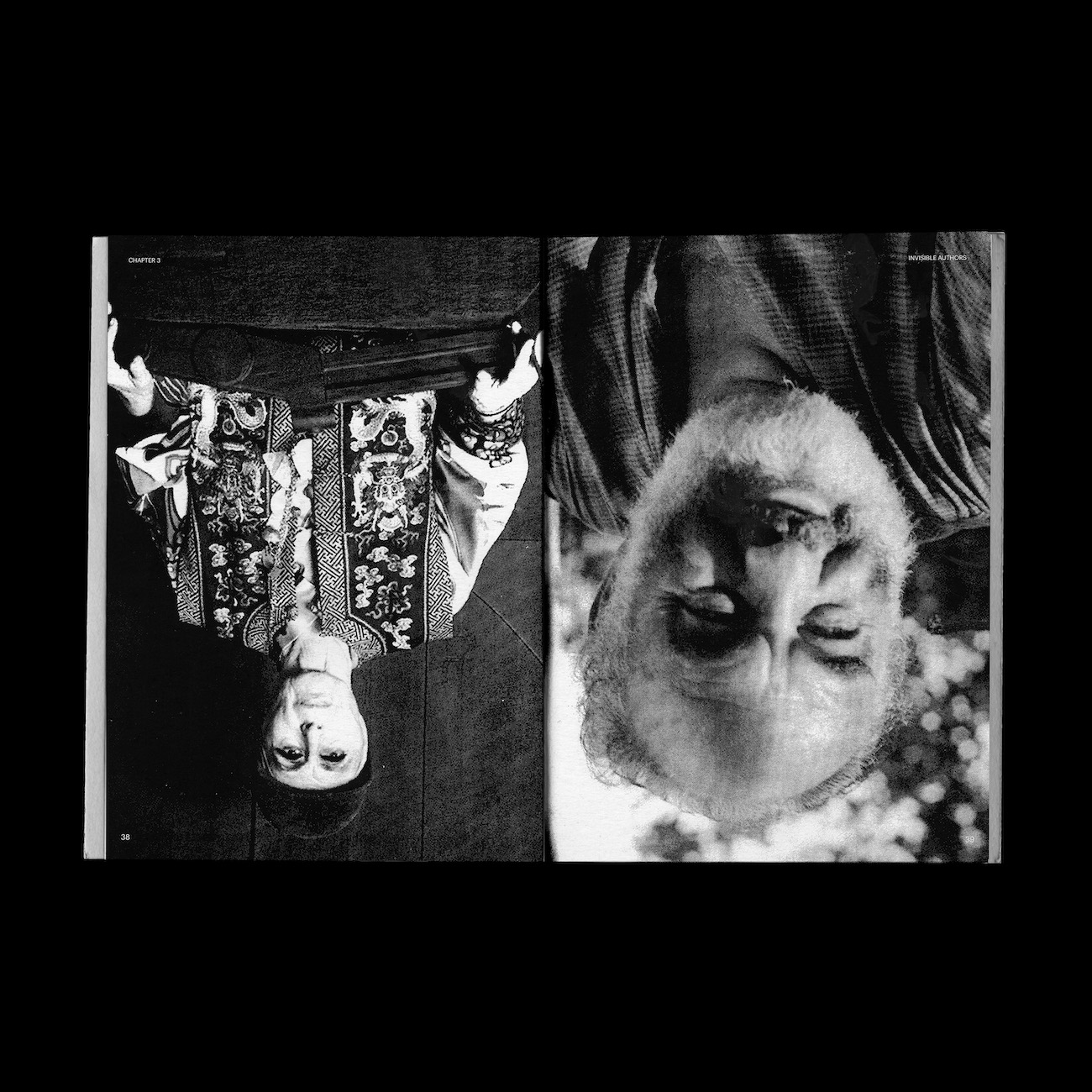
Shebetko adds that while working on the artbook, he encountered a lack of or unsystematic information about the Ukrainian queer community, and says he would be happy for his research to be a spur to more study of Ukraine’s queer history.
Shebetko created a total of 250 copies of «А Very Brief and Subjective Queer History of Ukraine». You can buy a copy on his Instagram.
More:
